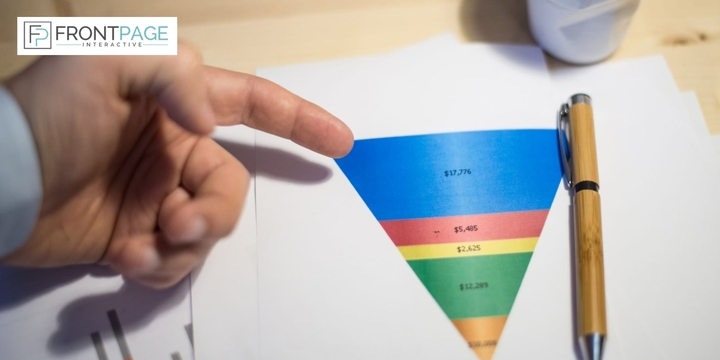Introduction: Why a Broken Sales Funnel Can Ruin Lead Generation
A sales funnel is meant to guide your audience from curiosity to conversion. But when it’s broken, it does the opposite—it loses leads, wastes ad spend, and confuses potential customers. Over time, even a small leak in the funnel can lead to major revenue loss.
As a digital marketing agency, we’ve worked with dozens of businesses that struggled to convert leads despite investing heavily in ads, email campaigns, and landing pages. In nearly every case, their funnel was the weak link.
Let’s break down what usually goes wrong—and what we did to fix it.
Common Funnel Issues That Hurt Conversions
Most funnel problems boil down to a few key issues:
1. Poor Messaging
Many funnels fail because they don’t speak directly to the target audience. If the message is too generic or full of jargon, potential customers lose interest fast.
We’ve seen landing pages that focus more on the business than the customer. A strong funnel needs clear messaging that answers the visitor’s question: “What’s in it for me?”
2. Bad User Experience (UX)
Slow-loading pages, clunky forms, and hard-to-read layouts create friction. People don’t want to work hard to figure out what you’re offering.
In some cases, we’ve found mobile pages that were completely broken, costing clients thousands in lost mobile traffic.
3. No Clear Call-to-Action (CTA)
If a user doesn’t know what to do next, they won’t take action. Weak or confusing CTAs make it hard for leads to move forward in the funnel.
Buttons that say “Submit” or “Click Here” without context often perform poorly. We’ve improved conversions just by replacing them with value-driven CTAs like “Get My Free Estimate” or “Schedule a Quick Call.”
Real-Life Examples of Funnel Failures We Fixed
Example 1: A Local Service Business With 10k Monthly Visitors—and No Leads
This client had solid traffic but zero conversions. After reviewing the funnel, we found the landing page had no contact form above the fold and a CTA buried at the bottom.
We simplified the copy, added a clear call to action, and improved the layout. Within weeks, their lead volume increased by over 40%.
Example 2: An E-commerce Brand With a Complicated Checkout Process
They were getting plenty of clicks but very few sales. The issue? A five-step checkout process that included unnecessary form fields.
We helped them streamline the checkout flow, optimized the product pages, and added trust signals. Their cart abandonment rate dropped significantly.
Example 3: A SaaS Company That Sent Traffic to a General Homepage
Instead of using a targeted landing page, this company sent all ad traffic to their homepage. Users had to dig through tabs to find the product info.
We built a funnel specifically for their paid campaigns—focused on benefits, trust, and a single call to action. Conversions nearly tripled.
The Best Approach to Structuring a High-Converting Funnel
Here’s what we’ve found works best:
- Hook your audience fast. Use a headline that speaks directly to their pain point or need.
- Build trust. Add client testimonials, reviews, or logos of companies you’ve worked with.
- Guide the journey. Use clear steps that lead the user from awareness to action.
- Make the CTA stand out. Place it above the fold and repeat it throughout the page.
- Keep it simple. Avoid distractions. Focus each page on one goal.
A strong funnel isn’t about fancy design—it’s about removing friction and making it easy for your visitors to say “yes.”
How Businesses Can Audit and Improve Their Funnels
Here’s how you can start improving your funnel today:
- Test your messaging. Are you speaking to your customer’s needs or just describing your business?
- Check your UX. Is your site mobile-friendly? Does it load quickly? Is it easy to navigate?
- Review your CTA. Is it clear? Is it repeated in the right spots? Does it offer value?
- Use analytics. Tools like Google Analytics and heatmaps can show where users drop off.
- Run A/B tests. Try different headlines, layouts, and offers to see what performs best.
If you’re not sure where to start, a professional audit can save you time and point you in the right direction.
Conclusion: What We’ve Learned and How You Can Improve
Over time, we’ve seen that most broken sales funnels suffer from the same problems—confusing messages, bad UX, and weak calls to action. But with the right structure and strategy, these problems are easy to fix.
If you’ve been spending money on ads or content without seeing results, your funnel could be the issue.
Our team has helped dozens of businesses get their lead flow back on track. Let us do the same for you.
🚨 Struggling to Turn Clicks Into Clients?
Let us fix your broken sales funnel before it costs you more leads.
✅ Better messaging
✅ Clean user flow
✅ Clear calls-to-action
[Request Your Funnel Audit Today with Frontpage Interactive →]
FAQs
- What is a broken sales funnel?
A broken sales funnel is one that fails to guide your visitors toward taking action—like filling out a form, booking a call, or making a purchase. It often results in poor conversions despite good traffic. - What are the signs my sales funnel isn’t working?
Common signs include high bounce rates, low conversion rates, lots of traffic but few leads, and users dropping off before taking action. - What are the most common funnel mistakes?
The biggest issues we see are unclear messaging, bad mobile experience, slow load times, and weak or hidden calls-to-action. - Can I fix my sales funnel without rebuilding everything?
Yes. Many times, simple changes like rewriting copy, moving the CTA, or improving the layout can lead to big improvements without starting from scratch. - How can your agency help fix my funnel?
We review your funnel from top to bottom—messaging, layout, UX, calls-to-action—and provide a clear action plan. If needed, we can also handle the full rebuild to get your funnel working right.









